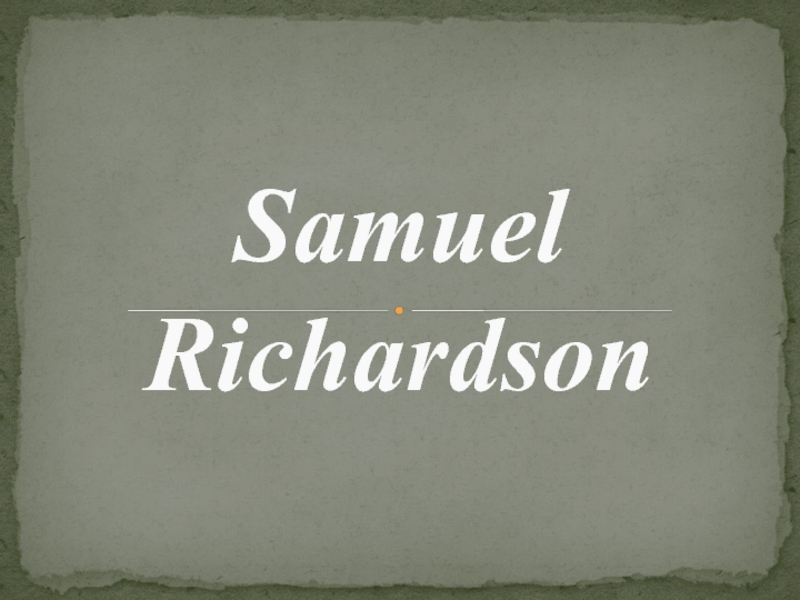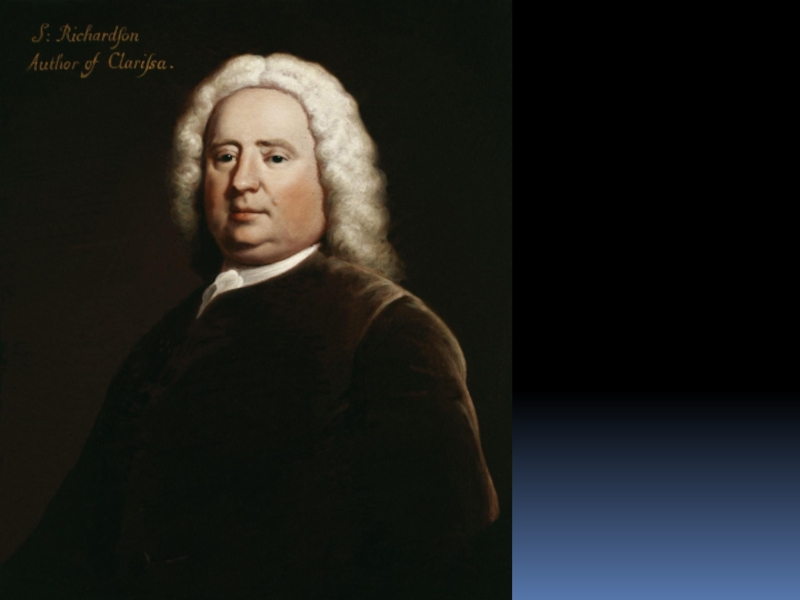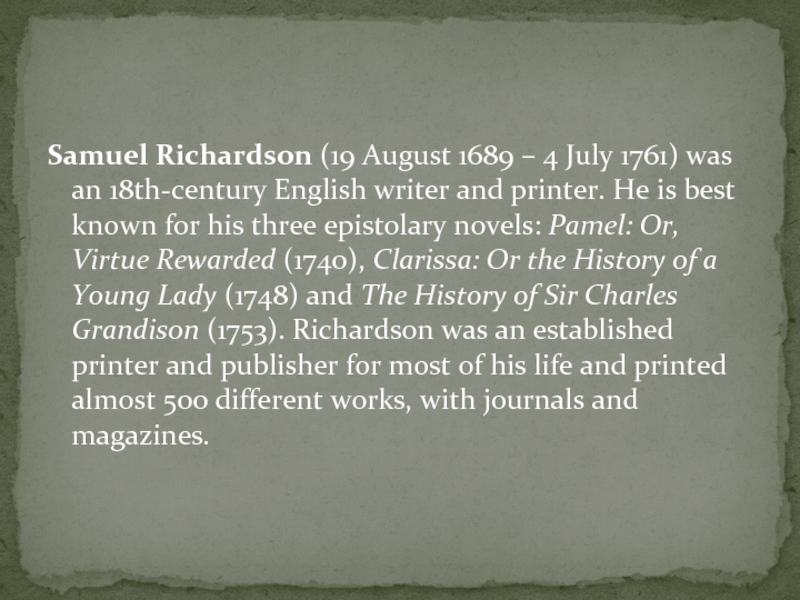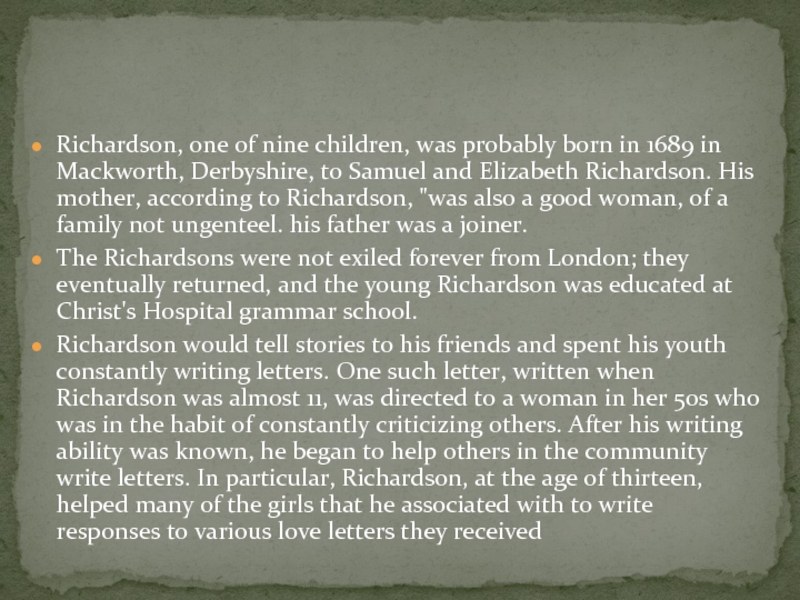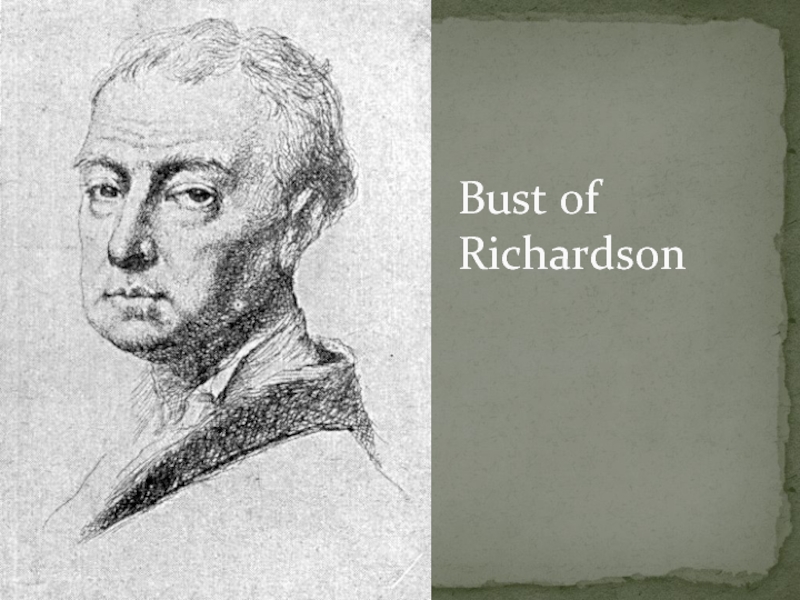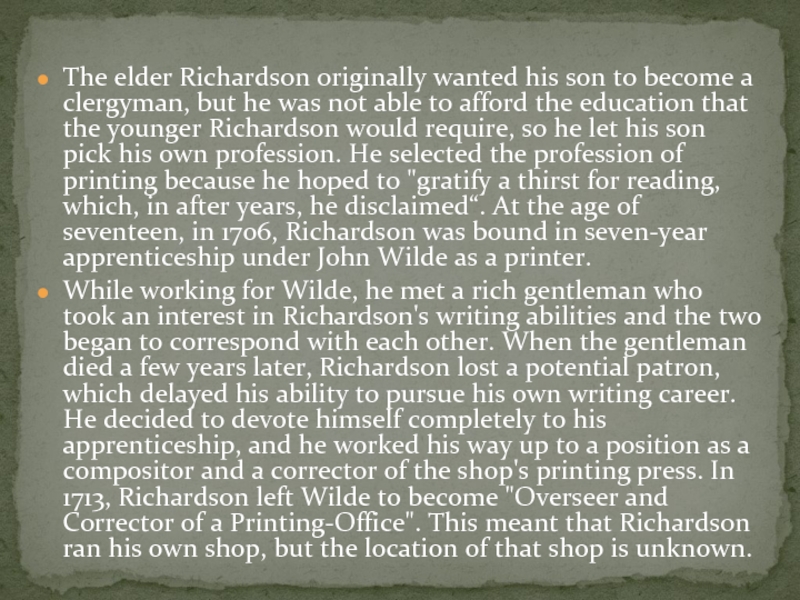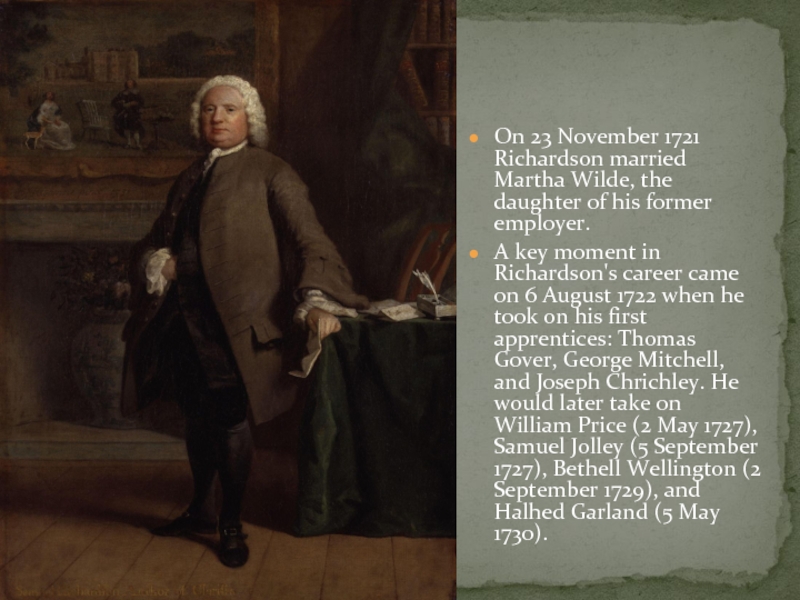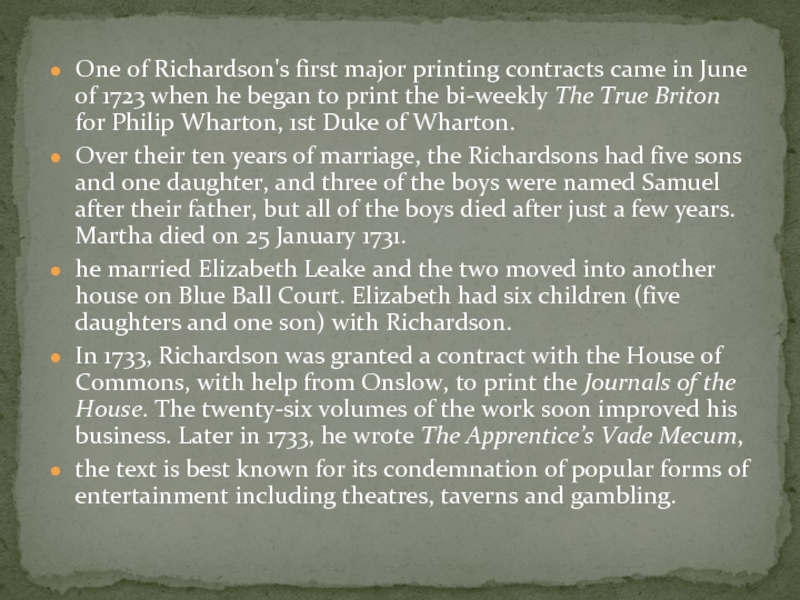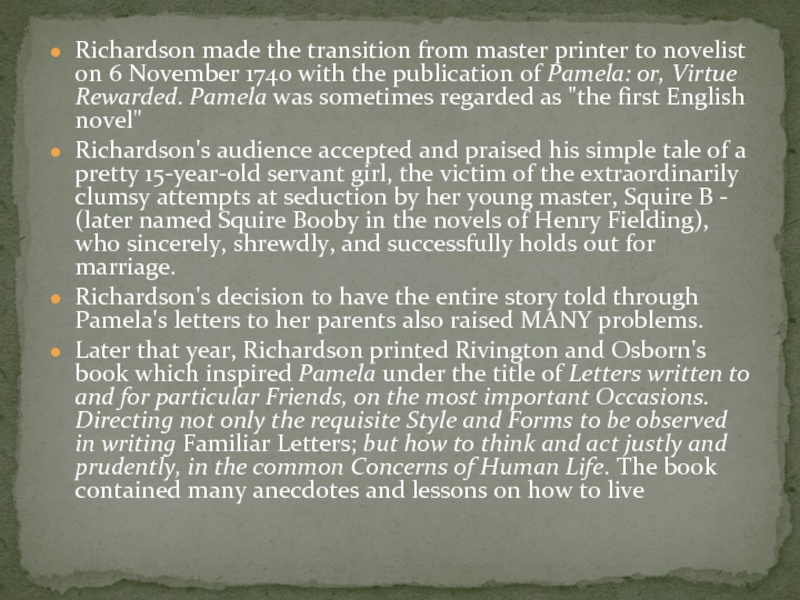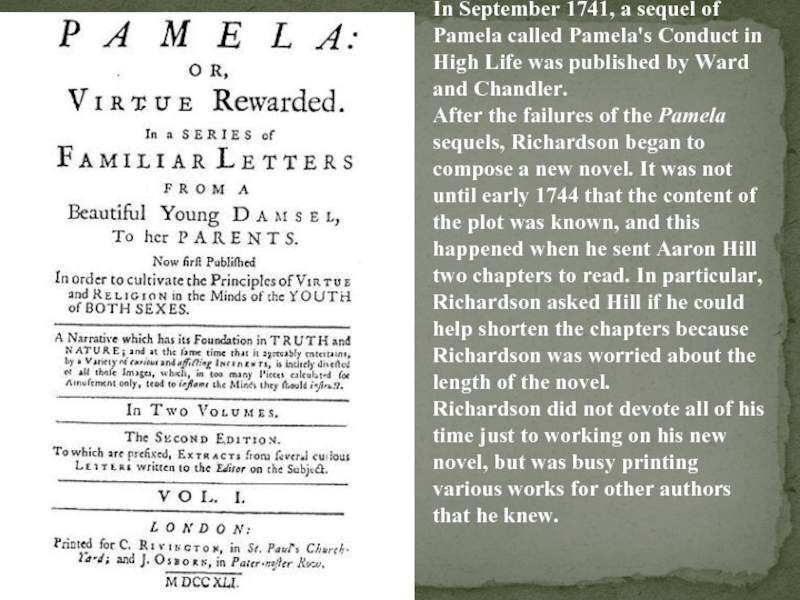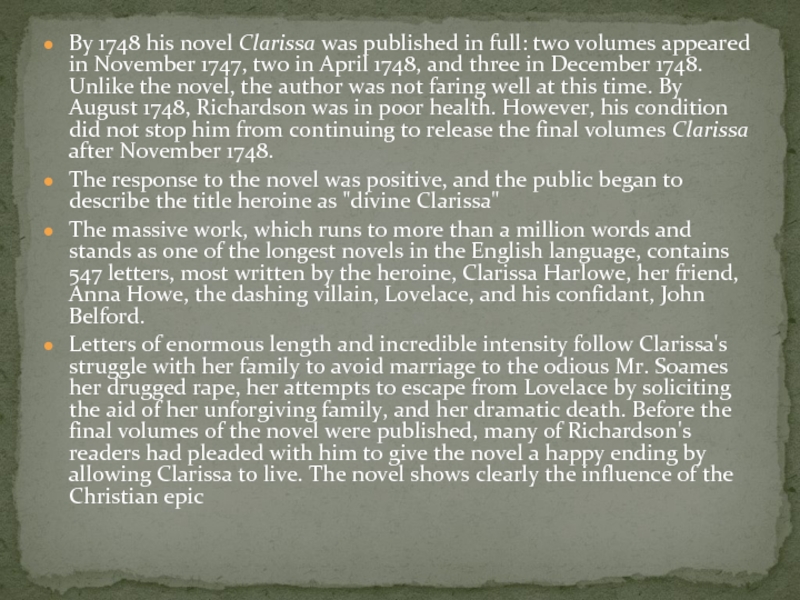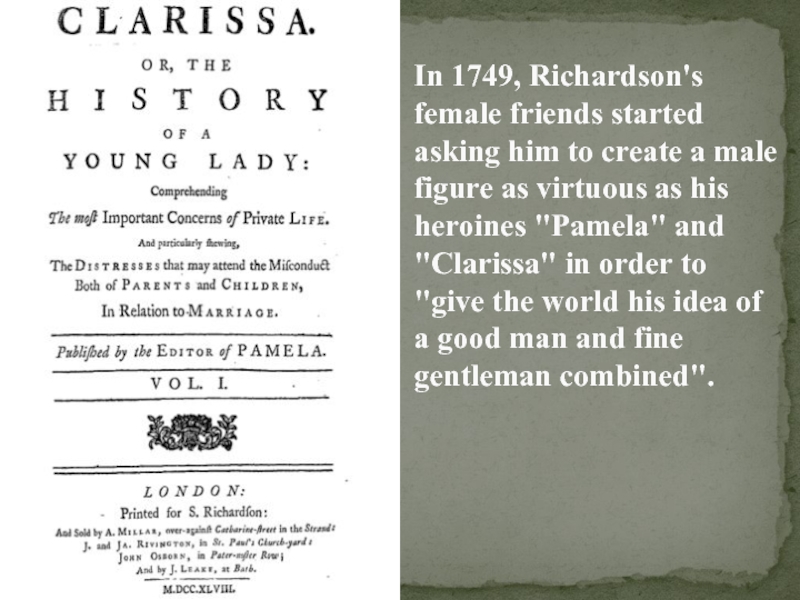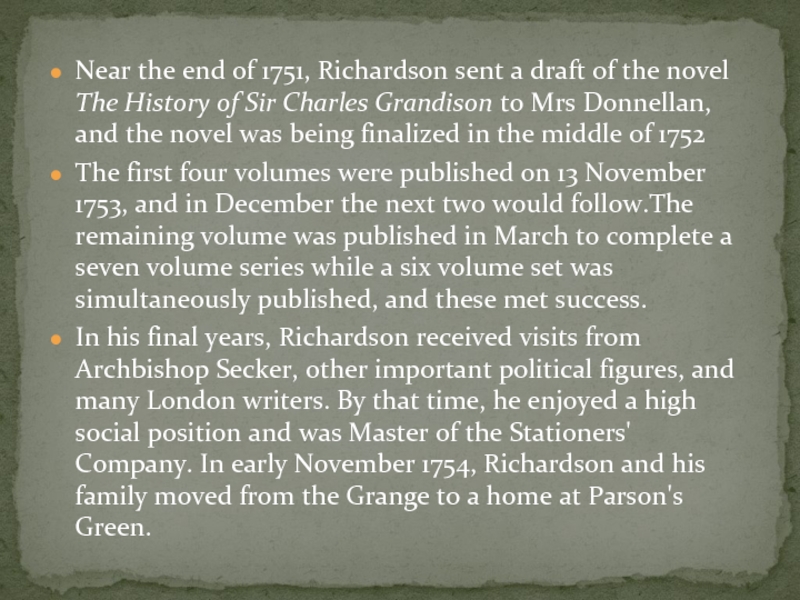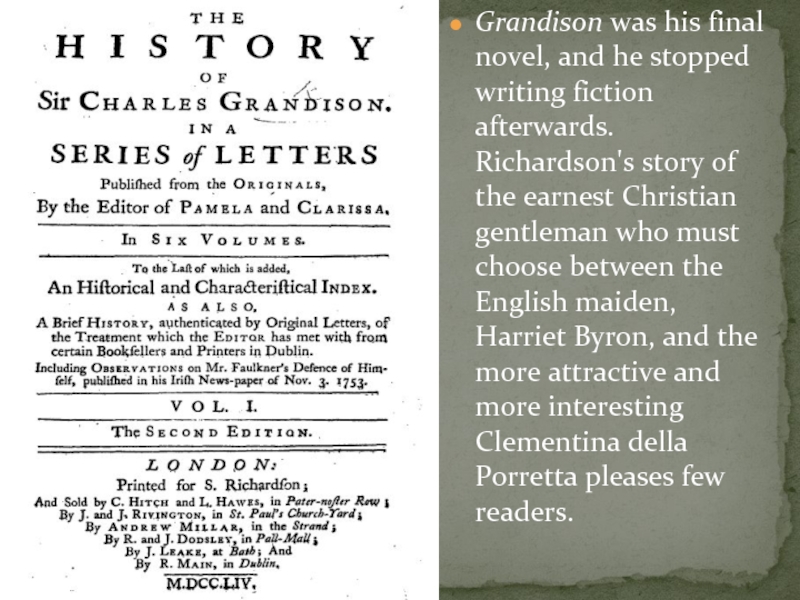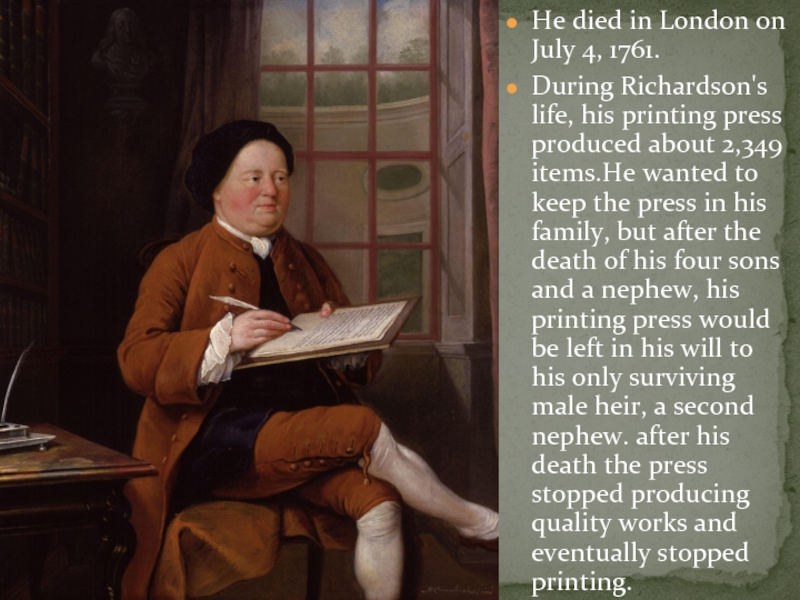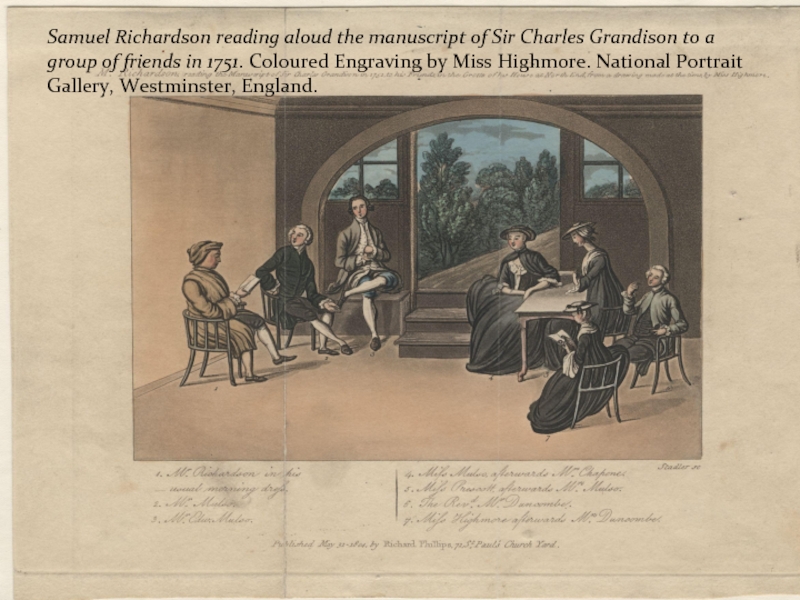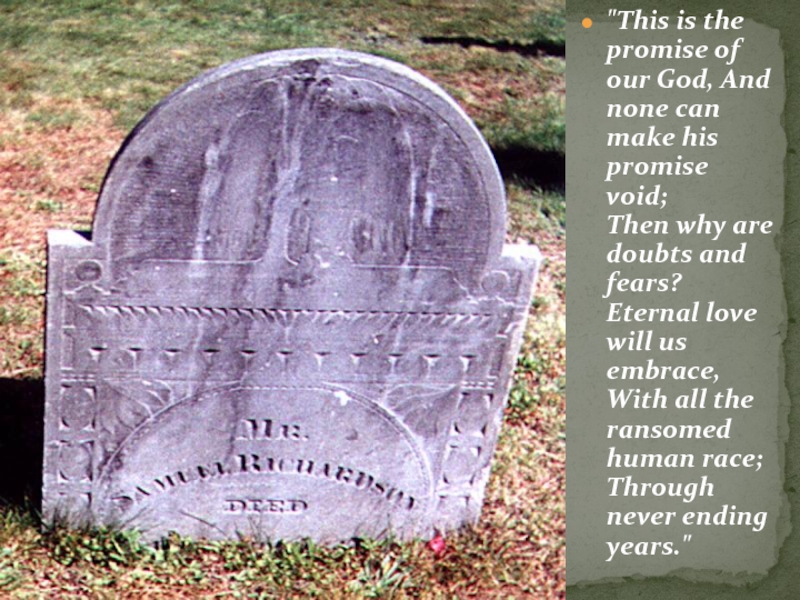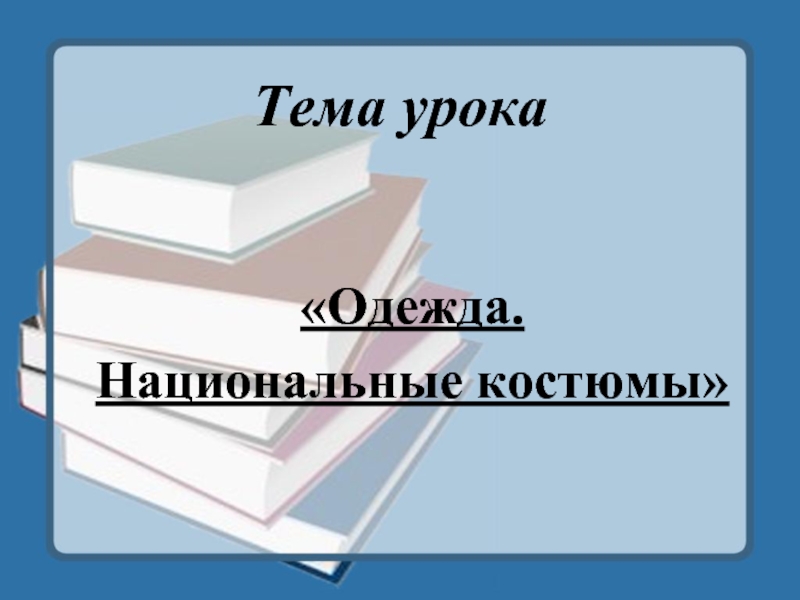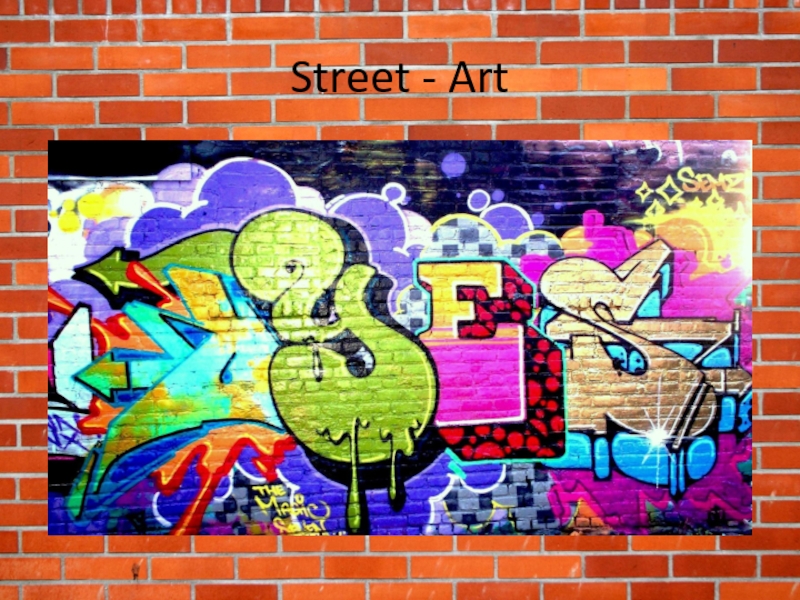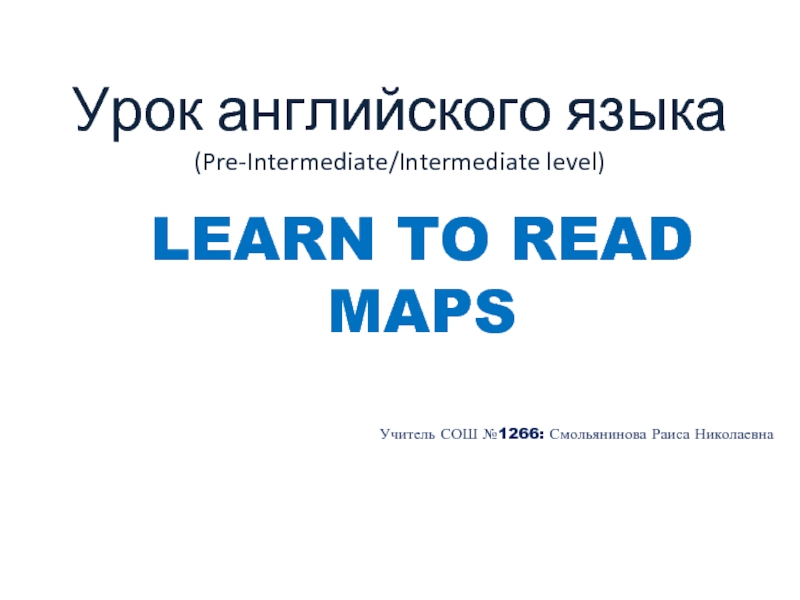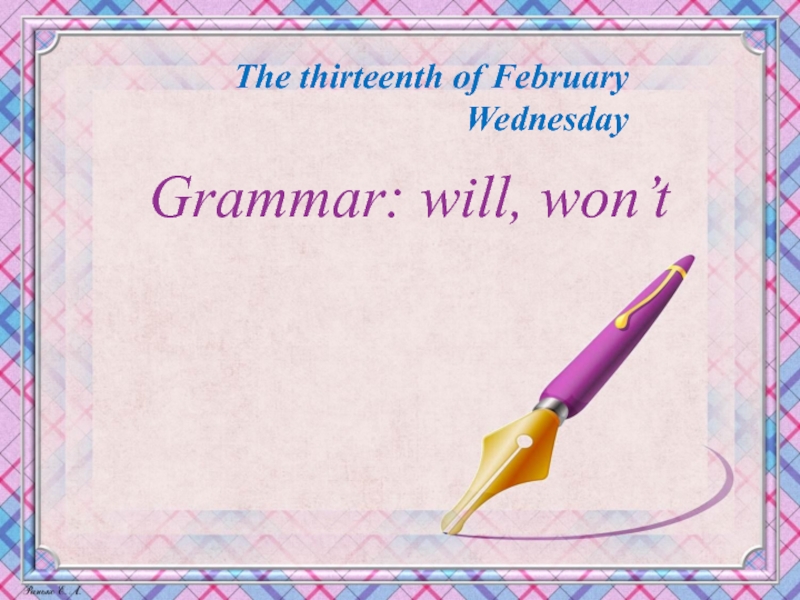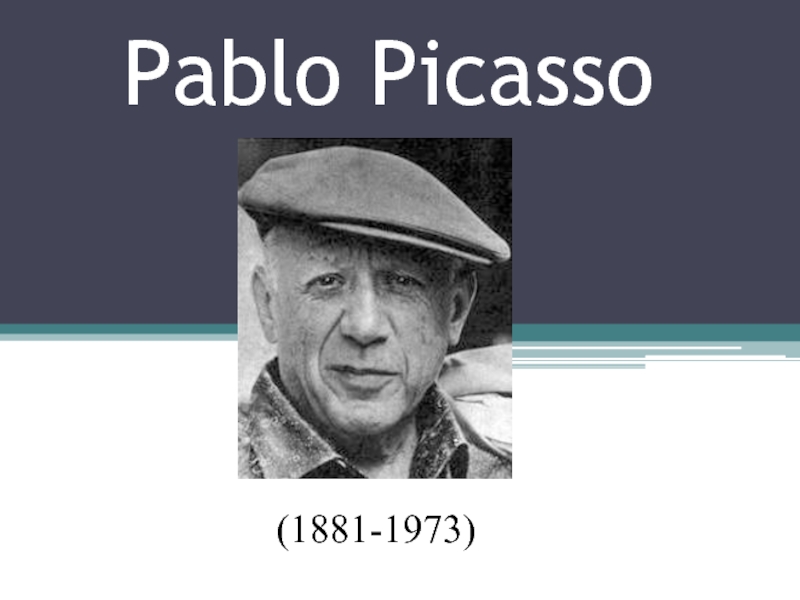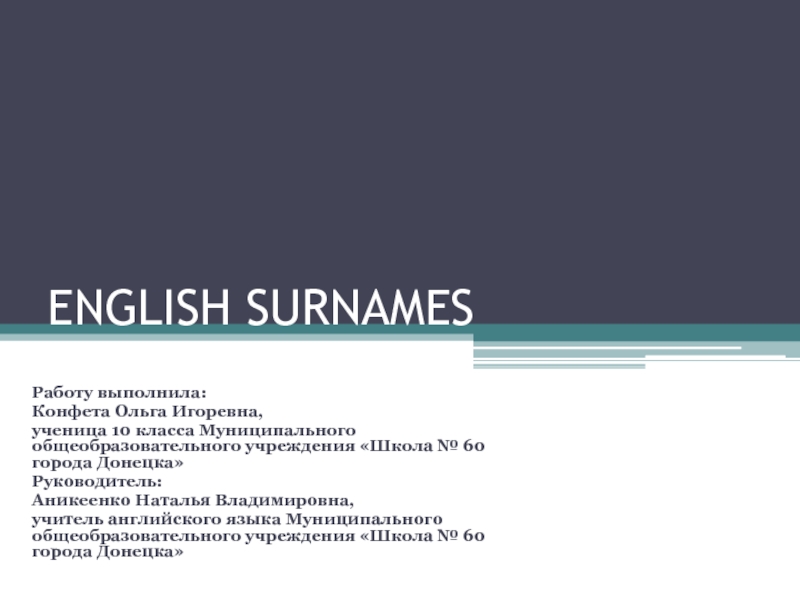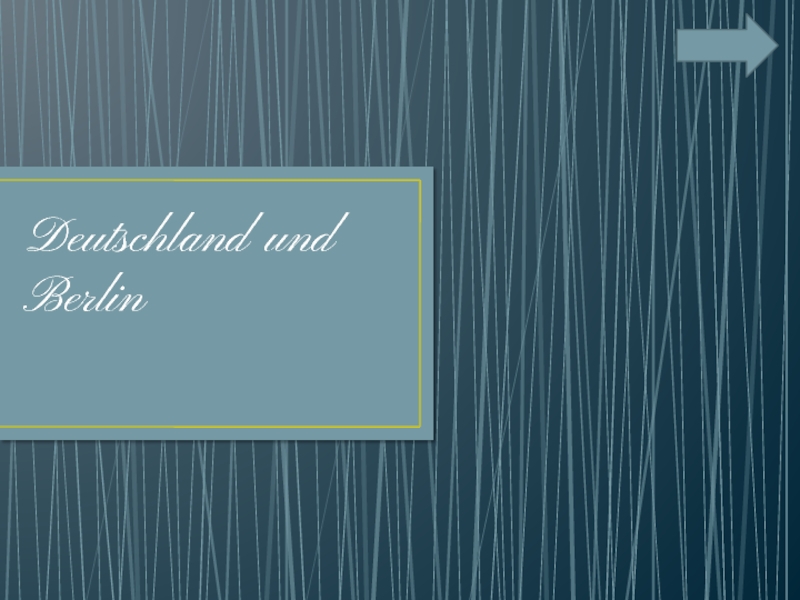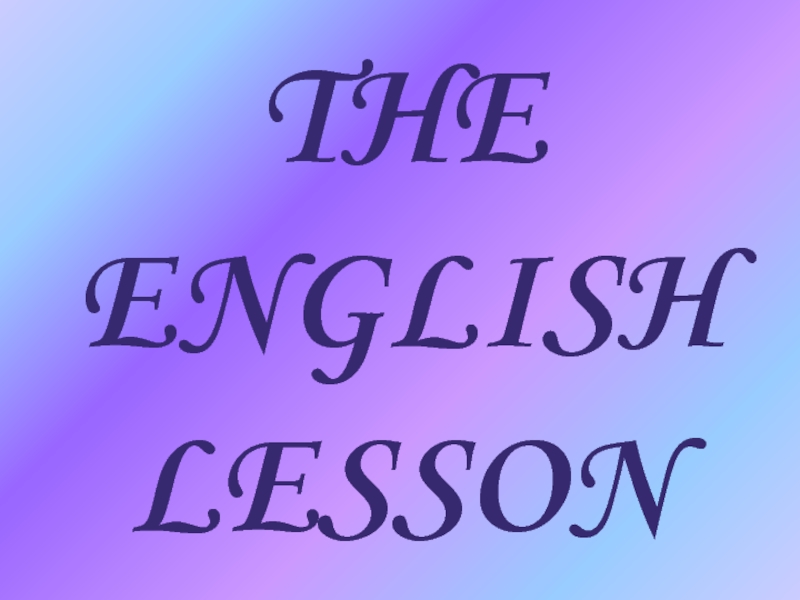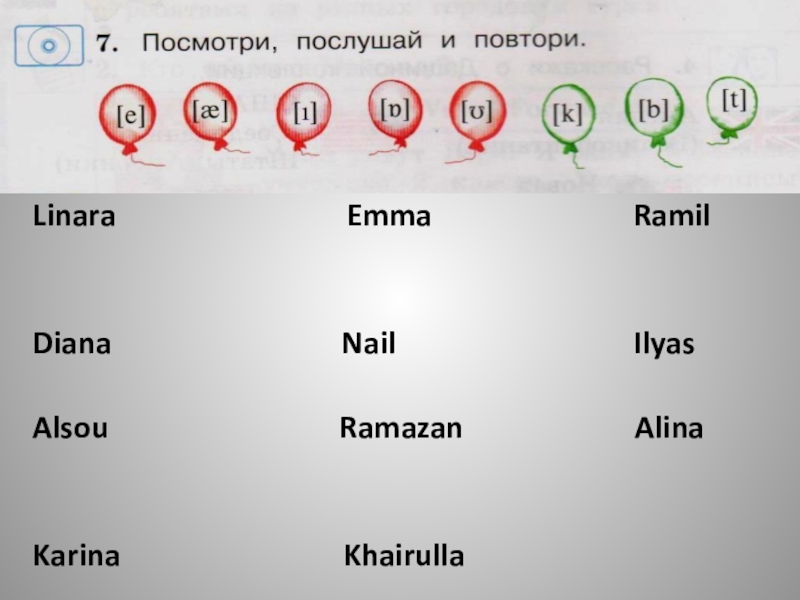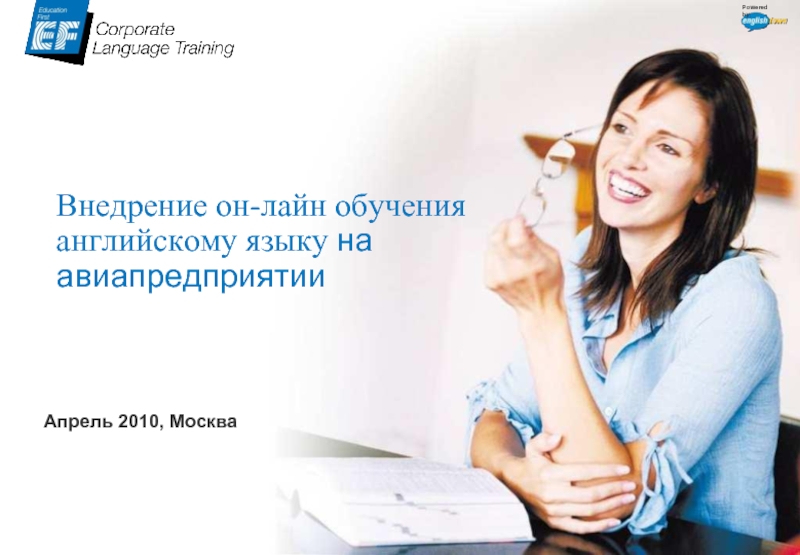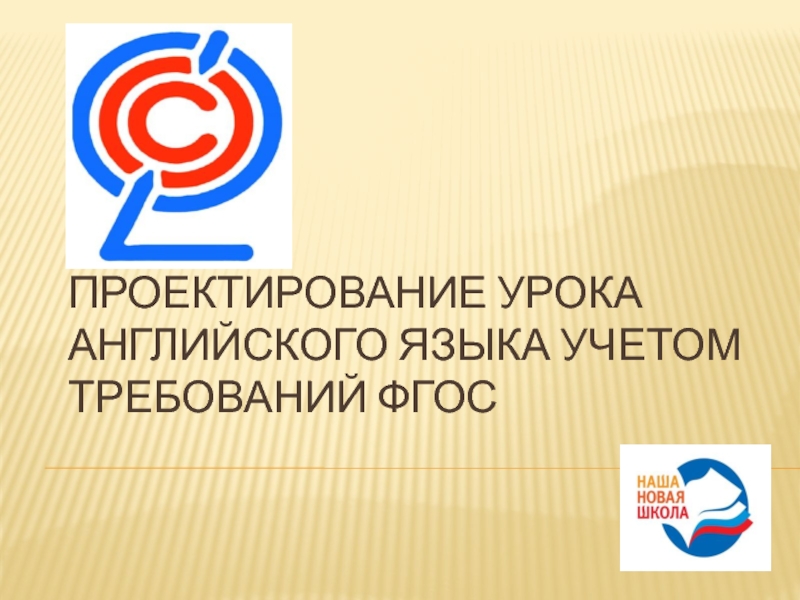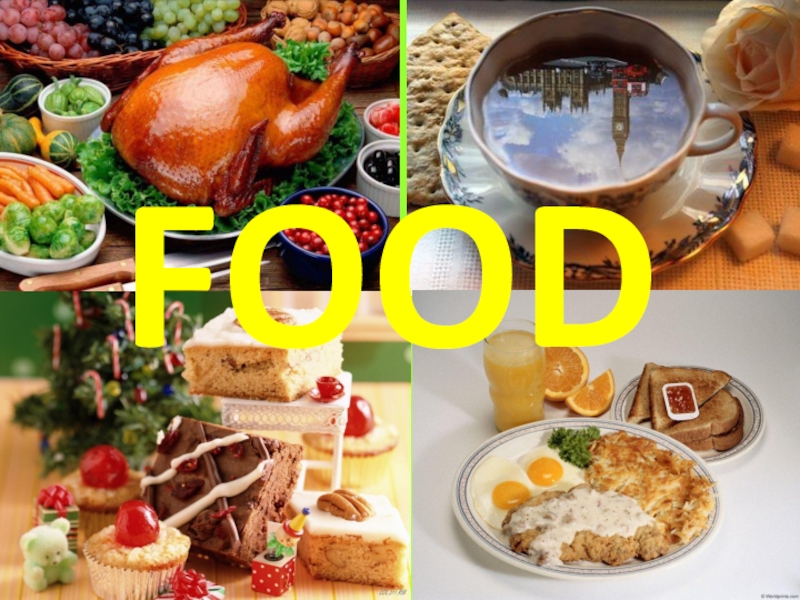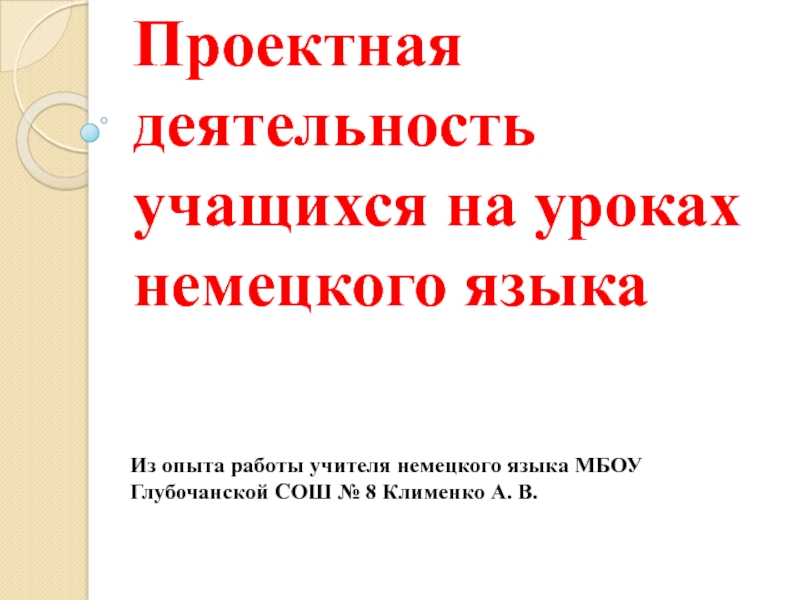Разделы презентаций
- Разное
- Английский язык
- Астрономия
- Алгебра
- Биология
- География
- Геометрия
- Детские презентации
- Информатика
- История
- Литература
- Математика
- Медицина
- Менеджмент
- Музыка
- МХК
- Немецкий язык
- ОБЖ
- Обществознание
- Окружающий мир
- Педагогика
- Русский язык
- Технология
- Физика
- Философия
- Химия
- Шаблоны, картинки для презентаций
- Экология
- Экономика
- Юриспруденция
Samuel Richardson
Содержание
- 1. Samuel Richardson
- 2. Слайд 2
- 3. Samuel Richardson (19 August 1689 – 4
- 4. Richardson, one of nine children, was probably
- 5. Bust of Richardson
- 6. The elder Richardson originally wanted his son
- 7. On 23 November 1721 Richardson married Martha
- 8. One of Richardson's first major printing contracts
- 9. Richardson made the transition from master printer
- 10. In September 1741, a sequel of Pamela
- 11. By 1748 his novel Clarissa was published
- 12. In 1749, Richardson's female friends started asking
- 13. Near the end of 1751, Richardson sent
- 14. Grandison was his final novel, and he
- 15. He died in London on July 4,
- 16. Samuel Richardson reading aloud the manuscript of
- 17. "This is the promise of our God,
- 18. Скачать презентанцию
Samuel Richardson (19 August 1689 – 4 July 1761) was an 18th-century English writer and printer. He is best known for his three epistolary novels: Pamel: Or, Virtue Rewarded (1740), Clarissa:
Слайды и текст этой презентации
Слайд 4Richardson, one of nine children, was probably born in 1689
in Mackworth, Derbyshire, to Samuel and Elizabeth Richardson. His mother,
according to Richardson, "was also a good woman, of a family not ungenteel. his father was a joiner.The Richardsons were not exiled forever from London; they eventually returned, and the young Richardson was educated at Christ's Hospital grammar school.
Richardson would tell stories to his friends and spent his youth constantly writing letters. One such letter, written when Richardson was almost 11, was directed to a woman in her 50s who was in the habit of constantly criticizing others. After his writing ability was known, he began to help others in the community write letters. In particular, Richardson, at the age of thirteen, helped many of the girls that he associated with to write responses to various love letters they received
Слайд 6The elder Richardson originally wanted his son to become a
clergyman, but he was not able to afford the education
that the younger Richardson would require, so he let his son pick his own profession. He selected the profession of printing because he hoped to "gratify a thirst for reading, which, in after years, he disclaimed“. At the age of seventeen, in 1706, Richardson was bound in seven-year apprenticeship under John Wilde as a printer.While working for Wilde, he met a rich gentleman who took an interest in Richardson's writing abilities and the two began to correspond with each other. When the gentleman died a few years later, Richardson lost a potential patron, which delayed his ability to pursue his own writing career. He decided to devote himself completely to his apprenticeship, and he worked his way up to a position as a compositor and a corrector of the shop's printing press. In 1713, Richardson left Wilde to become "Overseer and Corrector of a Printing-Office". This meant that Richardson ran his own shop, but the location of that shop is unknown.
Слайд 7On 23 November 1721 Richardson married Martha Wilde, the daughter
of his former employer.
A key moment in Richardson's career came
on 6 August 1722 when he took on his first apprentices: Thomas Gover, George Mitchell, and Joseph Chrichley. He would later take on William Price (2 May 1727), Samuel Jolley (5 September 1727), Bethell Wellington (2 September 1729), and Halhed Garland (5 May 1730).Слайд 8One of Richardson's first major printing contracts came in June
of 1723 when he began to print the bi-weekly The
True Briton for Philip Wharton, 1st Duke of Wharton.Over their ten years of marriage, the Richardsons had five sons and one daughter, and three of the boys were named Samuel after their father, but all of the boys died after just a few years. Martha died on 25 January 1731.
he married Elizabeth Leake and the two moved into another house on Blue Ball Court. Elizabeth had six children (five daughters and one son) with Richardson.
In 1733, Richardson was granted a contract with the House of Commons, with help from Onslow, to print the Journals of the House. The twenty-six volumes of the work soon improved his business. Later in 1733, he wrote The Apprentice’s Vade Mecum,
the text is best known for its condemnation of popular forms of entertainment including theatres, taverns and gambling.
Слайд 9Richardson made the transition from master printer to novelist on
6 November 1740 with the publication of Pamela: or, Virtue
Rewarded. Pamela was sometimes regarded as "the first English novel"Richardson's audience accepted and praised his simple tale of a pretty 15-year-old servant girl, the victim of the extraordinarily clumsy attempts at seduction by her young master, Squire B - (later named Squire Booby in the novels of Henry Fielding), who sincerely, shrewdly, and successfully holds out for marriage.
Richardson's decision to have the entire story told through Pamela's letters to her parents also raised MANY problems.
Later that year, Richardson printed Rivington and Osborn's book which inspired Pamela under the title of Letters written to and for particular Friends, on the most important Occasions. Directing not only the requisite Style and Forms to be observed in writing Familiar Letters; but how to think and act justly and prudently, in the common Concerns of Human Life. The book contained many anecdotes and lessons on how to live
Слайд 10In September 1741, a sequel of Pamela called Pamela's Conduct
in High Life was published by Ward and Chandler. After the
failures of the Pamela sequels, Richardson began to compose a new novel. It was not until early 1744 that the content of the plot was known, and this happened when he sent Aaron Hill two chapters to read. In particular, Richardson asked Hill if he could help shorten the chapters because Richardson was worried about the length of the novel. Richardson did not devote all of his time just to working on his new novel, but was busy printing various works for other authors that he knew.Слайд 11By 1748 his novel Clarissa was published in full: two
volumes appeared in November 1747, two in April 1748, and
three in December 1748. Unlike the novel, the author was not faring well at this time. By August 1748, Richardson was in poor health. However, his condition did not stop him from continuing to release the final volumes Clarissa after November 1748.The response to the novel was positive, and the public began to describe the title heroine as "divine Clarissa"
The massive work, which runs to more than a million words and stands as one of the longest novels in the English language, contains 547 letters, most written by the heroine, Clarissa Harlowe, her friend, Anna Howe, the dashing villain, Lovelace, and his confidant, John Belford.
Letters of enormous length and incredible intensity follow Clarissa's struggle with her family to avoid marriage to the odious Mr. Soames her drugged rape, her attempts to escape from Lovelace by soliciting the aid of her unforgiving family, and her dramatic death. Before the final volumes of the novel were published, many of Richardson's readers had pleaded with him to give the novel a happy ending by allowing Clarissa to live. The novel shows clearly the influence of the Christian epic
Слайд 12In 1749, Richardson's female friends started asking him to create
a male figure as virtuous as his heroines "Pamela" and
"Clarissa" in order to "give the world his idea of a good man and fine gentleman combined".Слайд 13Near the end of 1751, Richardson sent a draft of
the novel The History of Sir Charles Grandison to Mrs
Donnellan, and the novel was being finalized in the middle of 1752The first four volumes were published on 13 November 1753, and in December the next two would follow.The remaining volume was published in March to complete a seven volume series while a six volume set was simultaneously published, and these met success.
In his final years, Richardson received visits from Archbishop Secker, other important political figures, and many London writers. By that time, he enjoyed a high social position and was Master of the Stationers' Company. In early November 1754, Richardson and his family moved from the Grange to a home at Parson's Green.
